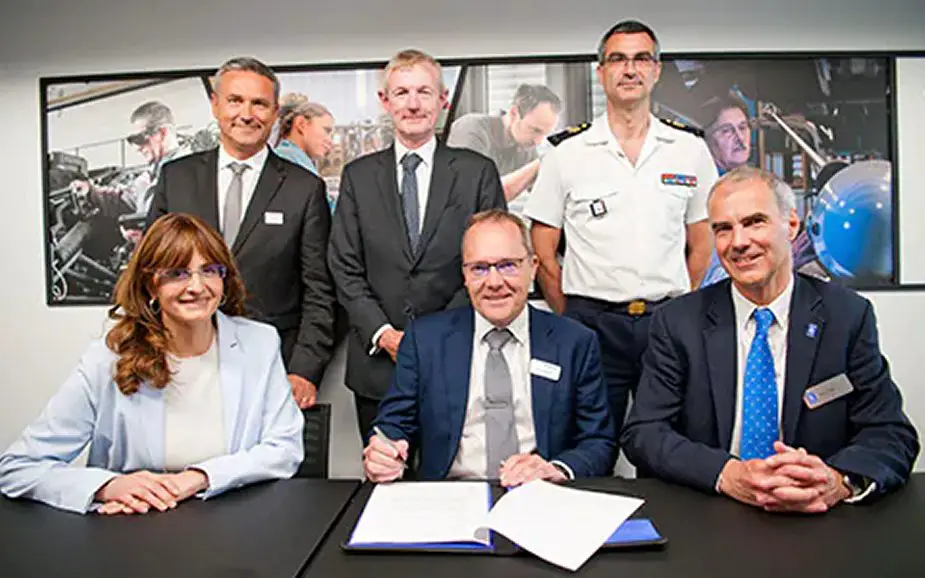According to a PR published by Rolls-Royce on July 18, 2022, the UK company and Safran Power Units have jointly signed an Assessment Phase contract with MBDA, as part of the Franco-British Future Cruise / Anti-Ship Weapon (FC/ASW) program. Both partners will work collaboratively to mature a new propulsion solution for a subsonic, low-observable missile expected to be fielded before the end of the decade.
Follow Navy Recognition on Google News at this link
 Signature of the Assessment Phase contract for the Future Cruise / Anti-Ship Weapon (FC/ASW) program (Picture source: Rolls Royce)
Signature of the Assessment Phase contract for the Future Cruise / Anti-Ship Weapon (FC/ASW) program (Picture source: Rolls Royce)
Signed at Farnborough International Airshow, the agreement now means that Rolls-Royce and Safran Power Units will work alongside MBDA to meet the propulsion requirements for the UK and French Governments, with the intent to provide a game-changing capability to overcome hardened targets and air defense systems in increasingly contested battlespace environment.
Earlier the UK Ministry of Defence and the French Armament General Directorate (Direction Générale de l’Armement -DGA) signed a bilateral agreement for the FC/ASW program that will see the joint development of a next generation of deep strike and heavy anti-ship missiles.
About the FC/ASW program
The FC/ASW ("Future Cruise/Anti-Ship Weapon") or FMAN/FMC is a program launched by France and the United Kingdom to develop a missile system to replace their jointly-developed Storm Shadow/SCALP as well as their respective Exocet and Harpoon anti-ship missiles.
Equally funded by both countries, the project is led by European missile manufacturer MBDA and is a product of the close defense relationship set out between both nations by the Lancaster House treaties.
The FC/ASW is powered by a ramjet motor, is 5 meters in length, weighs around 800 kg, and has a payload comprising one 200 kg main and two 50 kg subsidiary warheads.
These warheads can either directly contribute to the overall impact or be ejected from lateral bays before the missile reaches its target, in effect acting as submunitions.
This unique feature allows a single Perseus to either strike several targets in the same general area or to strike a single large target (such as an aircraft carrier) in several different areas simultaneously, with the aim of maximizing damage.



